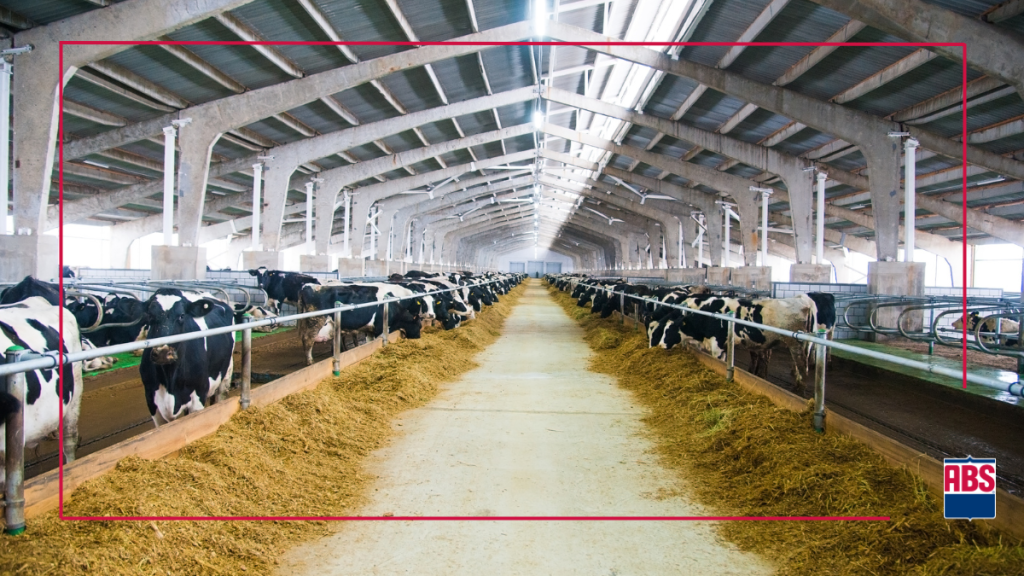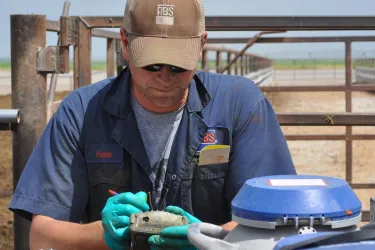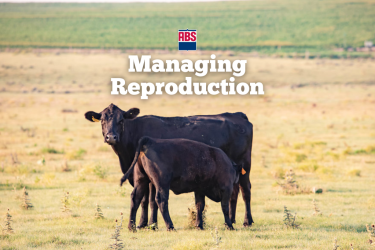Publish date: 7.18.24
It’s summertime! Maybe not every corner of North America, most of us are experiencing crazy hot and humid temperatures as we are in the middle of summer. As people enjoy the benefits of our air-conditioned homes, buildings, and cars, we also need to be thinking about our livestock. Increased heat impacts production and performance in all animal agriculture. Today, we will discuss the impacts of heat stress and cover the financial effects it can have on your dairy. Let’s break down what heat stress is, the consequences of heat stress, and how you can combat it.
What is Heat Stress?
Heat stress in dairy cows occurs when their internal heat production, combined with environmental heat, surpasses a cow’s ability to cool down through natural processes like sweating and evaporative cooling. Dairy cows generate significant metabolic heat through digestion and milk production. When this internal heat, coupled with absorbed heat from the environment, exceeds their cooling capacity, cows enter a state of heat stress.
Optimal Temperature Range and Humidity
The optimal temperature range for dairy cows is between 23- and 72-degrees Fahrenheit, though this can vary based on humidity and airflow. In humid conditions, high-producing dairy cows can experience heat stress even at temperatures below 68 degrees Fahrenheit. This underscores the importance of considering the Temperature Humidity Index (THI) when assessing heat stress risks.
Cows begin to feel heat stress at a THI threshold of 68, which is often before humans notice any discomfort. It is also important to know that the threshold value can be lower for high-producing cows because of the added metabolic heat that is a by-product of additional feed intake and milk production.
Consequences of Heat Stress
Performance
Heat stress can impact the performance of a cow. When cows are experiencing heat stress, their respiration rates increase. On a normal day, a cow would have about 40 to 60 breaths per minute. A severe case of heat stress can result in 100 to 104 breaths per minute, which can cause extreme discomfort. An uncomfortable cow is a cow that won’t perform to her full ability.
Another discomfort caused by heat stress is increased standing time. Cows accumulate heat when laying down because less of their body surface is exposed to allow for heat loss. To increase their ability to cool themselves, they tend to stand which can impact milk production as they are using energy to cool themselves rather than producing milk. An increase in standing time can lead to an increase in lameness which can result in financial losses.
Reproduction
Heat stress has profound effects on the reproductive performance of dairy cows as well. Elevated cortisol levels, a stress hormone, can depress fertility, immune function, and digestion. This hormonal imbalance can lead to a 30% drop in conception rates. Additionally, heat stress reduces the manifestation of heat signs—both the duration and intensity of estrous expression decrease. Also, the time of ovulation may be delayed in cows under heat stress which can result in breeding too early in relation to ovulation. Those two impacts are what breeders should think about in terms of lower fertility when temperatures get warmer.
Heat stress can also increase the rate of embryonic loss. Cows’ susceptibility to early embryonic loss increases when body temperature rises above normal because the embryo has not developed heat tolerance. These factors collectively contribute to lower reproductive efficiency during hotter months.
Milk Production
Milk production is significantly affected by heat stress. Cows who are experiencing heat stress have elevated cortisol levels which inhibits Oxytocin, the hormone that stimulates a cow’s mammary gland to let milk down. This can lead to cows not milking properly, impacting milk production profitability.
During periods of severe heat stress, cows can lose 35-50% of their milk production. Implementing cooling systems can mitigate these losses and improve milk quality, including fat content. For example, when cooling measures such as fans and shading were introduced in a producer’s systems, cows maintained higher milk production levels despite heat stress. This highlights the critical role of effective heat abatement strategies in maintaining productivity. Heat stress can affect the pounds of milk produced and the quality of the milk produced.
Water and Feed Intake
Another consequence of heat stress is the effects on water intake. Cows experiencing heat stress will have increased water intake. It might seem obvious, but as cows increase milk production, the amount of water they need increases. Their need rises even more as temperatures get warmer. Ensuring cows have free access to clean water is vital, especially in warmer seasons. As temperatures rise, cows’ water intake can increase from 21 gallons to 32 gallons per day. Regular maintenance of water troughs to provide clean water is essential.
Heat stress also decreases feed intake, with cows reducing their consumption by up to 50% in severe conditions. Even cooled cows have a 10-15% decrease. This reduction directly affects milk production and overall cow performance. Thus, cows must stay cool in warmer temperatures to allow them to consume the necessary feed to produce more pounds of milk. Providing shade over feed bunks can encourage higher feed intake to support better milk yield.
Key Takeaways for Combating Heat Stress
1. Ensure Unlimited Access to Clean Water: Regularly maintain water troughs to ensure they are clean and accessible throughout the dairy, including in pens, on the way to the parlor, and in holding areas.
2. Build Shading and Cooling Systems: Implement shade structures over feed bunks, rest areas, and holding pens to encourage feed intake and reduce heat stress. Consider installing fans and other cooling systems to maintain a comfortable environment for the cows.
3. Monitor and Manage Heat Stress Indicators: Regularly check for signs of heat stress, such as increased respiration rates and standing time. Use THI metrics to assess the risk and take proactive measures.
4. Adapt Reproductive Management: Recognize that heat stress can reduce the manifestation of heat signs, delay ovulation, and increase embryonic loss. Adjust breeding schedules and techniques to account for these changes during hotter months.
5. Continue to Educate Yourself: Understand heat stress and how to manage it to implement effective strategies and improve overall herd performance.
By understanding and addressing heat stress, you can protect your herds’ health and productivity, ensuring a more resilient and efficient operation. Heat stress can impact dairies differently, so consider implementing the above-mentioned takeaways that make sense for you.
To learn more about heat stress and its impact, contact your ABS Genetic Advisor or complete the form below.





